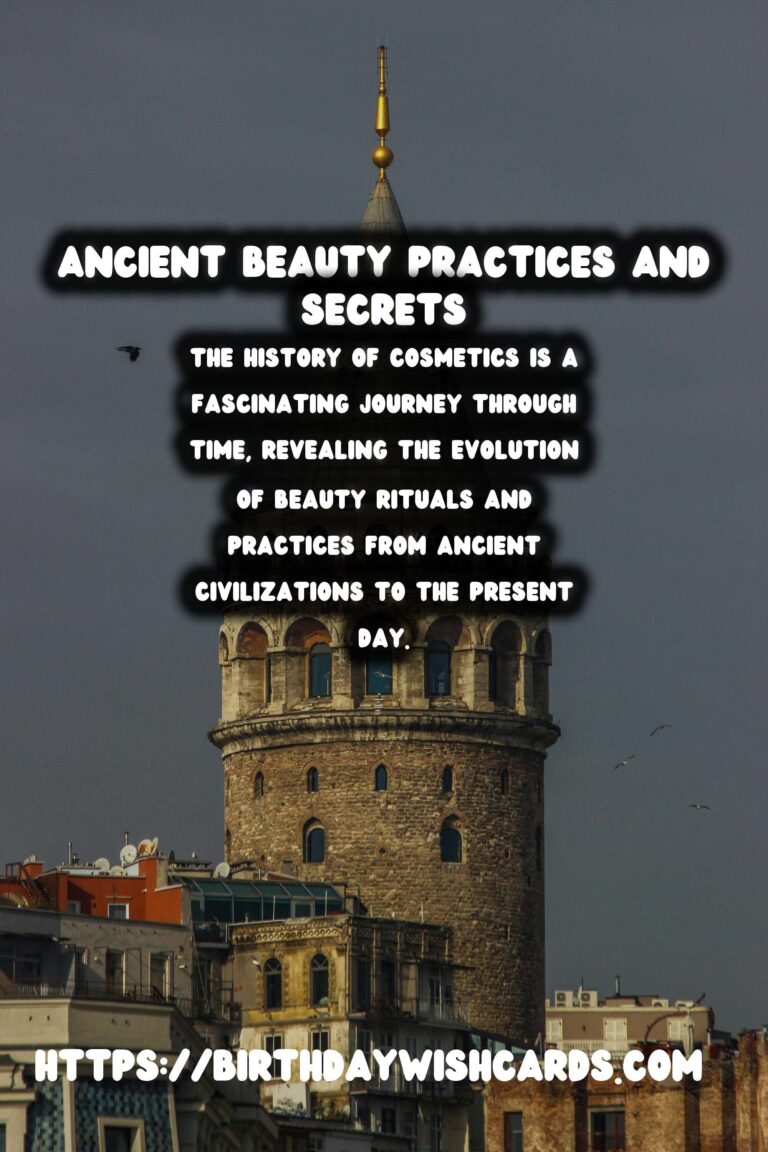
The history of cosmetics is a fascinating journey through time, revealing the evolution of beauty rituals and practices from ancient civilizations to the present day.
Ancient Egyptian Beauty Practices
The early use of cosmetics can be traced back to ancient Egypt, where beauty was as essential as religion and cleanliness. Egyptian men and women alike donned cosmetics, not only for aesthetic purposes but also for protection against the natural elements. Kohl, a black powdery substance, was used to line the eyes, offering protection from the sun’s glare and warding off infections.
Cleopatra herself was renowned for her beauty treatments, using milk baths and honey to maintain her youthful glow. Egyptian cosmetics signified status and power in society.
Mesopotamian Luxuries
In ancient Mesopotamia, both men and women indulged in the art of adornment. They used materials like crushed gemstones to enhance their lips, face, and nails, symbolizing social status. This penchant for beauty underscores the deep-seated desire for self-expression and personal improvement that persists across centuries.
Greek and Roman Influence
The Greeks and Romans further advanced the cosmetics landscape, introducing new ingredients and techniques. The Greeks preferred pale complexions, often using lead-based products to achieve this look, which unfortunately led to health complications.
Romans, on the other hand, were fascinated by baths, oils, and perfumes. Beauty was not just about color; it also involved scents and the feeling of the skin, demonstrating a more comprehensive approach to personal care.
Cosmetics in Ancient China and India
In ancient China, rice powder was a common cosmetic to whiten the face, indicating high status and wealth. The Chinese also developed intricate nail art, considered a privilege of the upper classes.
Meanwhile, in ancient India, cosmetics were deeply interwoven with cultural and spiritual practices. Henna was commonly used for hair and skin, while natural oils and pastes were employed for cleansing and beautifying the face.
Medieval and Renaissance Cosmetics
Cosmetic practices continued to evolve during the medieval period, despite religious restrictions. Both men and women were known to use cosmetic products, albeit discreetly. The Renaissance period saw a resurgence of elaborate hairstyles and increased use of skin-whitening powders, influenced by art and fashion trends.
The Modern Era of Cosmetics
The modern cosmetics industry has grown into a multi-billion dollar global business, yet it still draws from ancient practices. Many contemporary trends, such as natural beauty products and minimalist makeup, are reminiscent of the simplicity and effectiveness of ancient beauty secrets.
Today, the cosmetic industry continues to innovate while holding on to the timeless principles of enhancing natural beauty and expressing individuality.
The history of cosmetics is a fascinating journey through time, revealing the evolution of beauty rituals and practices from ancient civilizations to the present day. Egyptian men and women alike donned cosmetics, not only for aesthetic purposes but also for protection against the natural elements.
#cosmetics #beautyhistory

